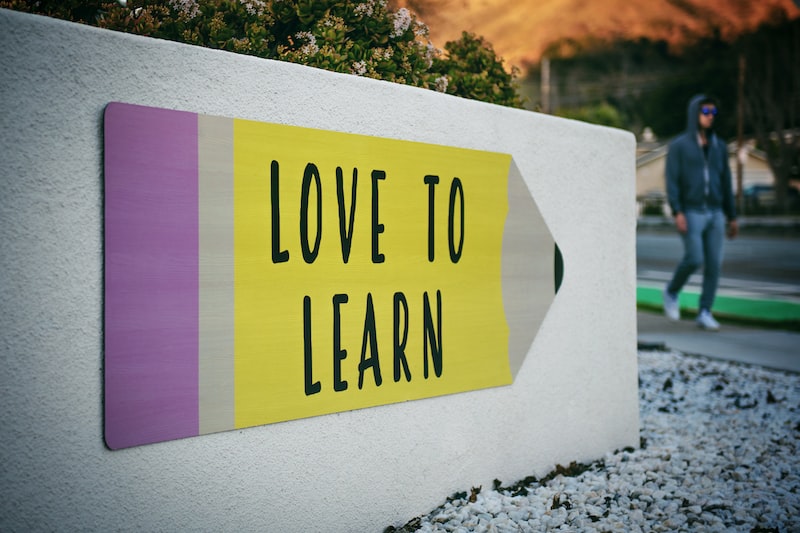In this rapidly evolving world, where borders are becoming more fluid and interconnectedness is increasing, global education initiatives play a crucial role in bridging cultures and fostering understanding among nations. These initiatives aim to break down barriers and promote cross-cultural communication, ultimately creating a more tolerant and inclusive society. But what exactly are global education initiatives and how do they work?
At their core, global education initiatives are programs designed to provide students with opportunities for international learning experiences. These initiatives can take various forms, such as student exchanges, study abroad programs, cultural immersion projects, and virtual collaborations. By engaging with peers from different countries and cultures, students gain a deeper appreciation for diversity, develop intercultural competencies, and broaden their perspectives.

One remarkable aspect of global education initiatives is their ability to transcend physical boundaries. With advancements in technology, students can now connect with their counterparts across the globe without leaving their classrooms. Virtual exchange programs enable students to interact with peers from different countries, share ideas, and collaborate on projects. This innovative approach not only saves costs but also opens doors to educational opportunities for students who may face financial or logistical constraints.
Moreover, global education initiatives foster empathy and mutual understanding. When students engage in direct cultural exchanges, they step out of their comfort zones and immerse themselves in new environments. They witness firsthand the similarities and differences that exist between cultures, challenging their preconceived notions and promoting a sense of shared humanity. This intimate exposure helps break down stereotypes and fosters respect for diverse perspectives.
Beyond individual growth, global education initiatives have the potential to shape a more unified and peaceful world. When young minds are exposed to different cultures, languages, and traditions, they become ambassadors of peace and understanding. Through their experiences, they cultivate an appreciation for our global interconnectedness, realizing that we all share this planet and must work together to address common challenges.
In conclusion, global education initiatives are catalysts for positive change, bridging cultures and borders to create a more inclusive and understanding world. By providing students with international learning experiences, these initiatives nurture intercultural competencies, foster empathy, and promote a sense of shared humanity. Whether through physical exchanges or virtual collaborations, global education initiatives pave the way for a brighter future where diversity is celebrated and barriers are dismantled.
Bridging Borders: Enhancing Global Collaboration in Education
Are you ready to embark on a journey of bridging borders and enhancing global collaboration in education? In this article, we’ll explore the transformative power that comes with connecting students, educators, and institutions from different parts of the world. Let’s dive in!
Education is no longer confined within the walls of a classroom or limited by geographical boundaries. With technology breaking down barriers, students now have unprecedented opportunities to engage with diverse cultures, ideas, and perspectives. By embracing global collaboration in education, we open doors to exciting possibilities.
Imagine a student in a small town interacting with peers from a different continent, sharing their experiences, and gaining invaluable insights. Through virtual classrooms, online platforms, and international exchange programs, students can connect and learn together, fostering a sense of curiosity and empathy towards different cultures.
Global collaboration also offers educators a wealth of resources and knowledge-sharing platforms. Teachers can tap into a vast network of professionals worldwide, exchanging teaching methodologies, best practices, and innovative ideas. This not only enriches their own teaching abilities but also enhances the learning experience for their students.
Furthermore, bridging borders in education prepares students for the realities of an interconnected world. They develop essential skills such as cross-cultural communication, adaptability, and a global mindset. These skills are increasingly in demand in today’s job market, where employers value individuals who can navigate and thrive in diverse environments.
One powerful aspect of global collaboration is the ability to address common challenges collectively. By bringing together educators, policymakers, and researchers from different countries, we can tackle global issues such as climate change, poverty, and inequality more effectively. Collaborative efforts have the potential to produce innovative solutions and inspire positive change on a global scale.
In conclusion, embracing global collaboration in education opens up a world of possibilities. It empowers students, educators, and institutions to connect, learn, and collaborate beyond borders. By fostering a global mindset and nurturing cross-cultural understanding, we equip the next generation with the skills they need to navigate an interconnected world. So let’s bridge borders and embark on a journey of enhanced global collaboration in education together. Are you ready to join this transformative movement?
Building Global Competencies for the 21st Century

In the fast-paced and interconnected world of the 21st century, building global competencies has become more crucial than ever before. As we navigate through a landscape marked by globalization and technological advancements, individuals and organizations must adapt to the changing dynamics to thrive in this globalized era.
So, what exactly are global competencies? In simple terms, they refer to the skills, knowledge, attitudes, and behaviors required to understand, communicate, and collaborate effectively across diverse cultures and contexts on a global scale. These competencies extend beyond traditional academic knowledge and encompass a broader set of capabilities that foster intercultural understanding, empathy, adaptability, and critical thinking.
One key aspect of developing global competencies is embracing cultural intelligence. It involves recognizing and respecting cultural differences, appreciating diversity, and cultivating a mindset of inclusivity. By understanding different perspectives and customs, individuals can bridge gaps and build meaningful connections across borders. Cultural intelligence allows us to navigate the complexities of cross-cultural interactions with sensitivity and openness, enabling effective collaboration and problem-solving in diverse teams.
Another vital element of global competencies is proficiency in multiple languages. Language serves as a doorway to other cultures, enabling deeper connections and fostering mutual understanding. By learning foreign languages, individuals can break down communication barriers and engage more meaningfully with people from different backgrounds. Moreover, language proficiency enhances cognitive abilities such as memory, problem-solving, and creativity, providing individuals with a competitive edge in the global job market.
In addition to cultural intelligence and language proficiency, global competencies also encompass skills such as adaptability, resilience, and intercultural communication. The ability to adapt to unfamiliar environments and embrace change is essential in today’s globalized world. Likewise, possessing strong interpersonal and communication skills enables effective collaboration with individuals from diverse backgrounds, fostering innovation and creativity.
To conclude, building global competencies is paramount in the 21st century. Embracing cultural intelligence, acquiring language proficiency, and developing essential skills such as adaptability and communication are vital for individuals and organizations to thrive in the interconnected global landscape. By investing in these competencies, we can broaden our horizons, create meaningful connections, and navigate the challenges and opportunities of our increasingly globalized world.
Addressing Educational Inequalities through Global Initiatives
Education is the gateway to a brighter future, but unfortunately, not everyone has equal access to quality education. Educational inequalities persist around the world, depriving countless individuals of opportunities for personal and societal growth. However, there is hope on the horizon as global initiatives emerge to tackle this pressing issue head-on.
One such initiative is the drive to provide universal access to education. Imagine a world where every child, regardless of their background or socioeconomic status, has the chance to learn and thrive. This ambitious goal aims to break down barriers and ensure that education becomes a fundamental right for all. By focusing on reaching marginalized communities, these initiatives are making strides in closing the educational gap.
Another crucial aspect of addressing educational inequalities is enhancing the quality of education itself. It’s not enough to merely provide access; the education received must be meaningful and impactful. Global initiatives are working towards raising teaching standards, developing relevant curricula, and implementing innovative teaching methods. This way, students can acquire the knowledge and skills necessary to navigate an increasingly complex world.
Furthermore, bridging the digital divide is a key focus area. In today’s interconnected world, technology plays a vital role in education. However, many disadvantaged communities lack access to computers, the internet, and digital resources. To address this disparity, global initiatives are striving to provide technological infrastructure and training to underserved areas. By equipping students with digital literacy, they are empowering them to participate fully in the digital age.
But how do these global initiatives make a tangible impact? By fostering partnerships between governments, non-profit organizations, and private sectors, these initiatives leverage collective resources and expertise. They create synergies that enable sustainable change to take root. By aligning efforts and sharing best practices, they maximize their reach and effectiveness, creating a ripple effect that extends far beyond individual interventions.
In conclusion, the fight against educational inequalities requires a concerted global effort. By ensuring universal access to education, improving its quality, bridging the digital divide, and fostering partnerships, we can make significant progress towards a more equitable world. Education is not just a privilege; it is a fundamental right that every individual deserves. Through these global initiatives, we can pave the way for a future where educational opportunities are accessible to all, regardless of their circumstances.
Leveraging Technology in Global Education Programs
Are you curious about how technology is transforming global education programs? Let’s take a journey into the world of leveraging technology in education and explore its incredible impact.
Imagine a classroom without borders, where students from different corners of the globe can connect and learn together. Thanks to technological advancements, this vision is becoming a reality. With the help of digital tools and platforms, global education programs are revolutionizing the way we learn and teach.
One of the key benefits of leveraging technology in global education programs is the ability to overcome geographical barriers. Students can now participate in virtual classrooms, attend lectures, and collaborate on projects with peers from around the world. This exposure to diverse cultures and perspectives enriches their learning experience and fosters global citizenship.
Moreover, technology enables personalized learning experiences tailored to individual students’ needs. Adaptive learning platforms use artificial intelligence algorithms to analyze students’ strengths and weaknesses, offering tailored content and feedback. This ensures that each student can learn at their own pace, boosting engagement and understanding.
Another aspect where technology shines is in resource accessibility. Traditional educational resources can be limited, particularly in remote or underserved areas. However, with technology, students gain access to a wealth of digital content, including e-books, videos, interactive simulations, and online libraries. This democratization of resources levels the playing field and empowers students with equal opportunities for knowledge acquisition.
In addition, leveraging technology in global education programs promotes lifelong learning. Online courses and Massive Open Online Courses (MOOCs) allow individuals to pursue education beyond traditional academic settings. Professionals can upskill or reskill themselves conveniently, while learners seeking specialized knowledge can access courses offered by experts worldwide. The possibilities for continuous learning are endless.
As technology continues to advance, so does the potential for enhancing global education programs. The integration of virtual reality, augmented reality, and artificial intelligence will further transform the learning landscape. These technologies can create immersive educational experiences, simulate real-world scenarios, and provide personalized guidance.
In conclusion, leveraging technology in global education programs opens up a world of opportunities for students and educators alike. It breaks down barriers, enhances accessibility, and fosters lifelong learning. By embracing technology, we can create inclusive, engaging, and impactful educational experiences that prepare students for the challenges and opportunities of the future.
[Word Count: 345]
Engaging Students in Cross-Cultural Experiences
Title: Engaging Students in Cross-Cultural Experiences: Broadening Horizons and Fostering Cultural Understanding
Imagine a classroom where students embark on a journey of discovery, stepping outside their comfort zones to explore the rich tapestry of cultures that surround us. Engaging students in cross-cultural experiences not only broadens their horizons but also cultivates empathy, respect, and a deeper understanding of the world we live in. In this article, we will delve into the power of cross-cultural experiences in education and how they can positively impact students’ lives.
Cross-cultural experiences provide students with unique opportunities to interact with individuals from different backgrounds, promoting cultural exchange and dialogue. By immersing themselves in diverse environments, students gain firsthand knowledge of traditions, customs, languages, and perspectives that differ from their own. This exposure encourages them to challenge preconceptions, question stereotypes, and embrace diversity in all its forms.
Moreover, these experiences foster personal growth by nurturing essential skills such as communication, adaptability, and problem-solving. Students learn to navigate unfamiliar situations, collaborate with peers from various cultures, and find common ground amidst differences. These skills are invaluable in today’s interconnected global society, where success often hinges on one’s ability to work effectively with people from diverse backgrounds.
One effective way to engage students in cross-cultural experiences is through student exchange programs. These programs allow students to spend time studying in a different country, living with host families, and fully immersing themselves in a new culture. By experiencing daily life in another country, students gain a profound appreciation for the nuances of different societies and develop lifelong friendships across borders.
Another avenue to promote cross-cultural engagement is through multicultural events and activities within schools. Organizing events such as international festivals, cultural workshops, or language exchange programs can create a vibrant atmosphere where students celebrate diversity and actively engage with different cultures. These interactive experiences provide a platform for students to share their own heritage, learn from others, and foster a sense of unity within the school community.
In conclusion, engaging students in cross-cultural experiences is a transformative educational approach that fosters cultural understanding, empathy, and personal growth. By embracing diversity and actively seeking opportunities to explore other cultures, we equip students with the tools to become global citizens who can navigate an increasingly interconnected world. So let us encourage cross-cultural experiences in education, enabling our students to develop into compassionate, open-minded individuals who value and celebrate the richness of our global community.
Assessing the Impact of Global Education Initiatives
Have you ever wondered about the impact of global education initiatives? How do these programs shape the future of education worldwide? Let’s delve into this fascinating topic and explore the transformative power of global education.
Global education initiatives are collaborative efforts that aim to improve education systems across countries, foster cultural exchange, and enhance educational opportunities for all. These initiatives recognize that education is a fundamental right and a key driver of social and economic development.
One significant impact of global education initiatives is their role in promoting cultural understanding and tolerance. By facilitating student exchanges, study abroad programs, and cross-cultural collaborations, these initiatives expose students to diverse perspectives and cultures. This exposure not only broadens their horizons but also fosters empathy and respect for others. In a world that is increasingly interconnected, such understanding is crucial for building peaceful and inclusive societies.
Another impact of global education initiatives lies in their contribution to knowledge transfer and innovation. Through partnerships between educational institutions, research collaboration, and capacity-building programs, these initiatives facilitate the sharing of best practices and expertise. This exchange of knowledge fuels innovation and helps address global challenges collectively. By leveraging the strengths of different countries, global education initiatives promote collaboration rather than competition, leading to accelerated progress in various fields.
Moreover, global education initiatives play a pivotal role in addressing educational inequalities. They strive to ensure that every child has access to quality education, regardless of their socio-economic background or geographical location. These initiatives focus on improving infrastructure, teacher training, and curriculum development in underserved areas. By investing in education, we can break the cycle of poverty, empower individuals, and build more equitable societies.
In conclusion, global education initiatives have a profound impact on education systems worldwide. They promote cultural understanding, facilitate knowledge transfer, foster innovation, and address educational inequalities. By embracing these initiatives, we can create a brighter future for generations to come, where education serves as a catalyst for positive change. So, let us support and celebrate the transformative power of global education initiatives.












Leave a Reply